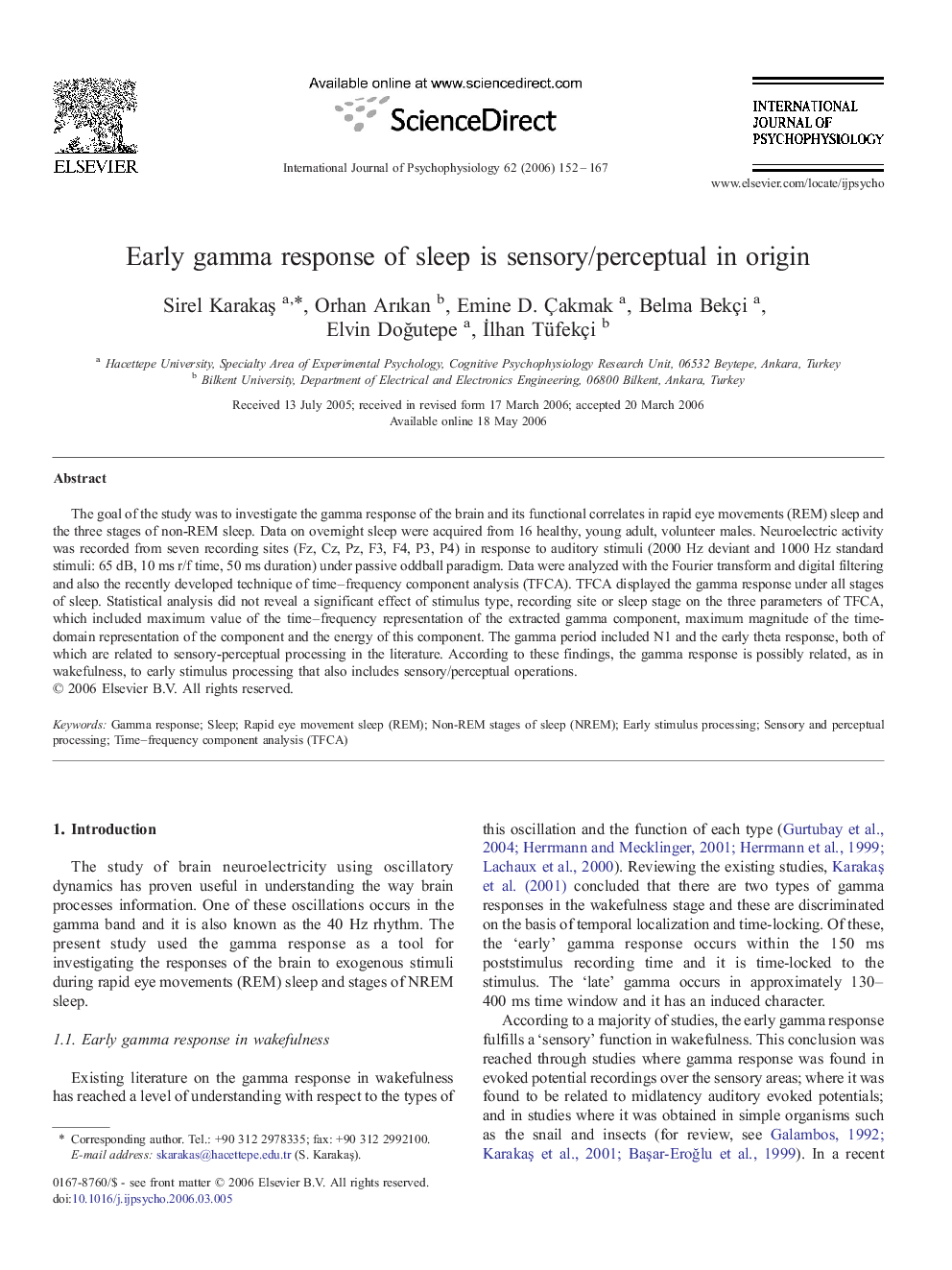| Article ID | Journal | Published Year | Pages | File Type |
|---|---|---|---|---|
| 931340 | International Journal of Psychophysiology | 2006 | 16 Pages |
The goal of the study was to investigate the gamma response of the brain and its functional correlates in rapid eye movements (REM) sleep and the three stages of non-REM sleep. Data on overnight sleep were acquired from 16 healthy, young adult, volunteer males. Neuroelectric activity was recorded from seven recording sites (Fz, Cz, Pz, F3, F4, P3, P4) in response to auditory stimuli (2000 Hz deviant and 1000 Hz standard stimuli: 65 dB, 10 ms r/f time, 50 ms duration) under passive oddball paradigm. Data were analyzed with the Fourier transform and digital filtering and also the recently developed technique of time–frequency component analysis (TFCA). TFCA displayed the gamma response under all stages of sleep. Statistical analysis did not reveal a significant effect of stimulus type, recording site or sleep stage on the three parameters of TFCA, which included maximum value of the time–frequency representation of the extracted gamma component, maximum magnitude of the time-domain representation of the component and the energy of this component. The gamma period included N1 and the early theta response, both of which are related to sensory-perceptual processing in the literature. According to these findings, the gamma response is possibly related, as in wakefulness, to early stimulus processing that also includes sensory/perceptual operations.
